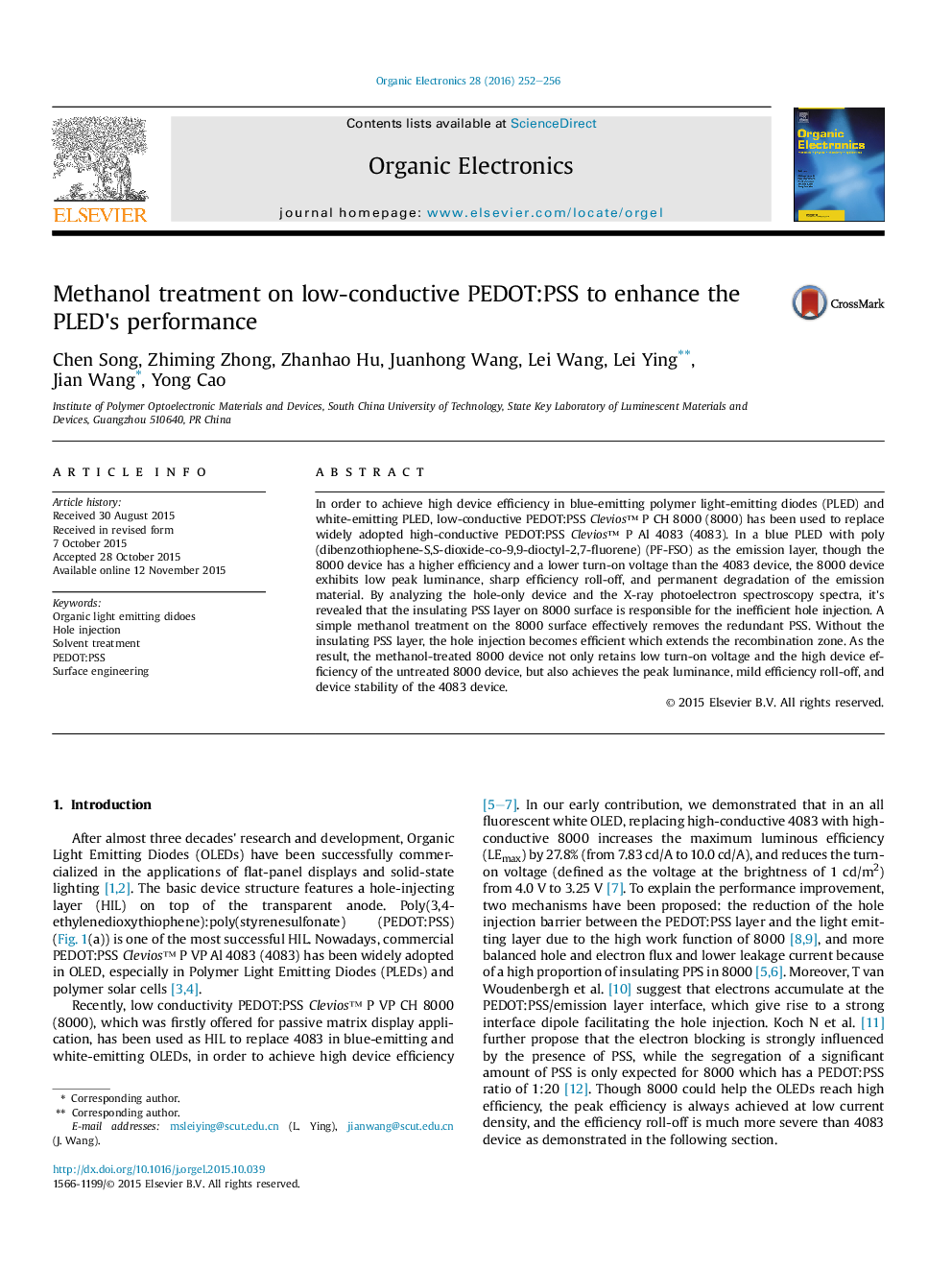| Article ID | Journal | Published Year | Pages | File Type |
|---|---|---|---|---|
| 1267141 | Organic Electronics | 2016 | 5 Pages |
•Low conductive PEDOT:PSS 8000 OLED device has severe efficiency roll-off.•The insulating PSS on PEDOT:PSS 8000 surface prevents efficient hole injection.•Methanol treatment removes the redundant PSS.•Without PSS, 8000 device performance is better than high conductive 4083 device.
In order to achieve high device efficiency in blue-emitting polymer light-emitting diodes (PLED) and white-emitting PLED, low-conductive PEDOT:PSS Clevios™ P CH 8000 (8000) has been used to replace widely adopted high-conductive PEDOT:PSS Clevios™ P Al 4083 (4083). In a blue PLED with poly (dibenzothiophene-S,S-dioxide-co-9,9-dioctyl-2,7-fluorene) (PF-FSO) as the emission layer, though the 8000 device has a higher efficiency and a lower turn-on voltage than the 4083 device, the 8000 device exhibits low peak luminance, sharp efficiency roll-off, and permanent degradation of the emission material. By analyzing the hole-only device and the X-ray photoelectron spectroscopy spectra, it's revealed that the insulating PSS layer on 8000 surface is responsible for the inefficient hole injection. A simple methanol treatment on the 8000 surface effectively removes the redundant PSS. Without the insulating PSS layer, the hole injection becomes efficient which extends the recombination zone. As the result, the methanol-treated 8000 device not only retains low turn-on voltage and the high device efficiency of the untreated 8000 device, but also achieves the peak luminance, mild efficiency roll-off, and device stability of the 4083 device.
Graphical abstractFigure optionsDownload full-size imageDownload as PowerPoint slide
